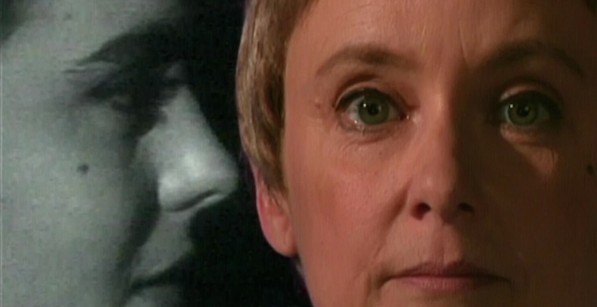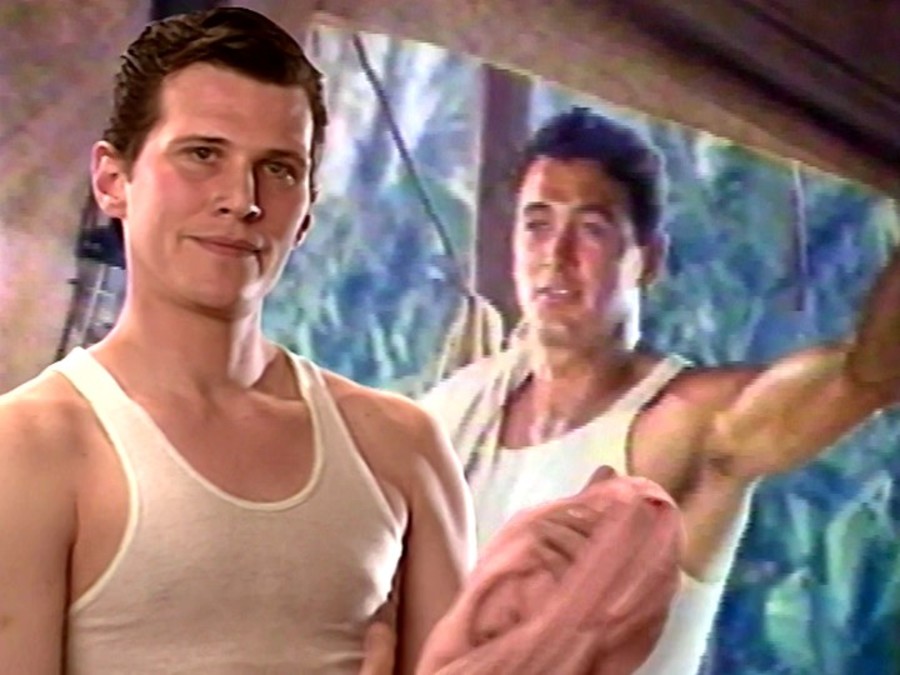These days video essays are booming, being produced at an exponential rate as more people are learning how to make them. But for all of this newness and excitement, we should remember that video essays are not a new thing. There are filmmakers who’ve been making them for decades—and compared to today’s videos, their works seem more unique than ever. Such is the case with the video essays of Mark Rappaport, an experimental filmmaker who broke new ground in the nineties with cinematic essays, particularly those on actors.
In Rock Hudson’s Home Movies, Rappaport takes footage from one of the leading male idols of the 1950s and uncovers the gay subtexts in his performances, hidden in plain sight. The argument is made in a playful spirit of subversion, seen in the opening credits, which literally write over the official Hollywood version of the story.
But Rappaport goes further most of today’s video essayists, who often settle on just using found footage. He actually has an actor play Rock Hudson, addressing the audience as if speaking from the afterlife, just a few years after Hudson had died of AIDS. This takes appropriation to a whole new level.
Rappaport expanded on this approach in his feature From the Journals of Jean Seberg, which explores the life of the actress made famous in Jean Luc-Godard’s Breathless. In addition to having actress Mary Beth Hurt play Seberg as narrator of her own life, Rappaport adopts tongue in cheek techniques that speculate on alternative versions of movies.
This also separates Rappaport’s work from today’s video essays. Most of today’s video essays are obsessed with celebrating movies and figuring new ways to package them. But Rappaport breaks through their glossy surfaces to show how underlying issues of politics and sexuality affect what shows up on screen, and how unfairly actresses get judged and treated. Clips compiled throughout Seberg’s turbulent career depict her struggle to maintain her sense of self in a world that routinely objectifies women on screen.
Rappaport’s latest video essay, I, Dalio, doesn’t have the audacious on-camera interventions of his earlier works, but it still conjures an actor’s voice from the grave to tell his own story of a life on screen. This time it’s Marcel Dalio, an actor in 1930s French movies who was confined to bit parts as a swindler or a scoundrel, partly due to his Jewishness. But his humanity shone in two films by one of cinema’s most humane directors, Jean Renoir. And when he fled the Nazis for the sanctuary of Hollywood, he ironically became a symbol of Frenchness in ways he could never be in his homeland.
I, Dalio is a fascinating story of how a life on screen can portray a vast cultural history filled with shifting prejudices. Like Rappaport’s other video essays, it’s not necessarily an authoritative history, but a critical exploration that travels through a space somewhere between fact and fantasy. It’s a space that’s unique to Rappaport among video essayists, because it gives sanctuary to the suppressed voices and hidden truths behind the silver screen.
Kevin B. Lee is Chief Video Essayist at Fandor. He has made over 250 video essays exploring film and media. His award-winning “Transformers: The Premake” was named one of the best documentaries of 2014 by Sight & Sound Magazine and played in several festivals including the Berlinale Film Festival Critics Week. Follow him on Twitter at @alsolikelife.






